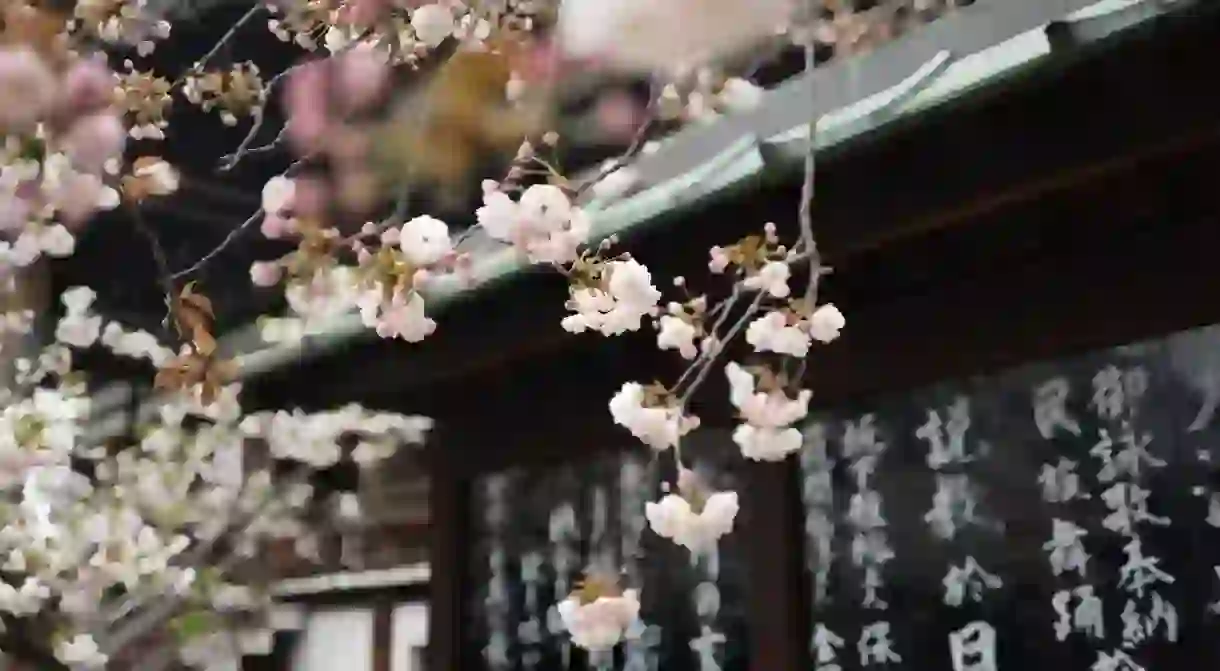Hanakotoba: The Secret Meanings Behind Flowers in Japan

Throughout history, cultures all over the world have used flowers as a form of unspoken communication. While it’s mainly a lost art, in Japan, this floral language is known as hanakotoba. Discover the secret meanings behind these nine blossoms in the Japanese language of flowers.
Camellia / Tsubaki

The camellia is an early spring flower native to Asia. In Japanese, this flower is known as tsubaki. They were very popular with nobles during the Edo Period. Among warriors and samurai, the red camellia symbolized a noble death. Otherwise, the red camellia means love. However, they don’t make good presents for people who are sick or injured because of the way the flowers “behead” themselves when they die.
Chrysanthemum / Kiku
Chrysanthemums, or mums for short, are known as kiku in Japanese. They’re native to both Asia and Europe. As a motif, these perfectly round flowers are one of the most recognizable. Chrysanthemums have noble connotations, appearing on the Japanese Imperial Family’s crest for generations. But white chrysanthemums indicate purity, grief, and truth, and are used for funerals.
Daffodil / Suisen
Daffodils or suisen are native to Europe and Northern Africa. They came to Japan almost 700 years ago and now grow wild in certain areas. They are unusual and bloom from late December into February. In hanakotoba, daffodils mean respect.
Wisteria / Fuji
Wisteria or fuji are purple flowers which grow on woody, trailing vines. They’re a popular spring motif, especially for traditional fashions such as kanzashi and kimono. In the past, wisteria was associated with nobility as commoners were forbidden from wearing the color purple.
Plum blossom / Ume

The ume or Chinese plum tree is native to China. It’s actually more closely related to the apricot tree, and the fruit of these trees are sometimes called Japanese apricots. In the old hanakotoba, these flowers indicated elegance and loyalty. They bloom in spring just before the cherry blossoms.
Red spider lily / Higanbana
Red spider lilies are bright summer flowers native throughout Asia. They are associated with final goodbyes, and legend has it that these flowers grow wherever people part ways for good. In old Buddhist writings, the red spider lily is said to guide the dead through samsara, the cycle of rebirth. Red spider lilies are often used for funerals, but they are also used decoratively with no such connotations.
Sweet pea / Suitopi
Sweet pea flowers are native to Italy and arrived in Japan at the turn of the 20th century. “Suitopi” is a transliteration of the flower’s English name. In the language of flowers, they mean goodbye. But the sweet pea has shed this symbolism for the most part and become a popular bouquet flower sold from winter to spring.
Sunflower / Himawari

The majority of sunflower species are native to North America but can now be found around the world. These cheerful flowers were brought over to Japan hundreds of years ago. As expected, himawari indicate radiance in the language of flowers, but also respect.
Cherry Blossom / Sakura

The ever-popular cherry blossoms known as sakura represent springtime. In the literary sense, they symbolize fleeting beauty and the brevity of life. In hanakotoba, they indicate a pure and gentle heart. Sakura are the most beloved spring flower and are used for all kinds of things, including cosmetics and as a flavor or decoration for cuisine—especially desserts. Why not book a spring date for our 12-day Epic Trip in Japan? So you can enjoy blossom season without the hassle of planning a big trip.
Check out these tours and excursions in Japan.













